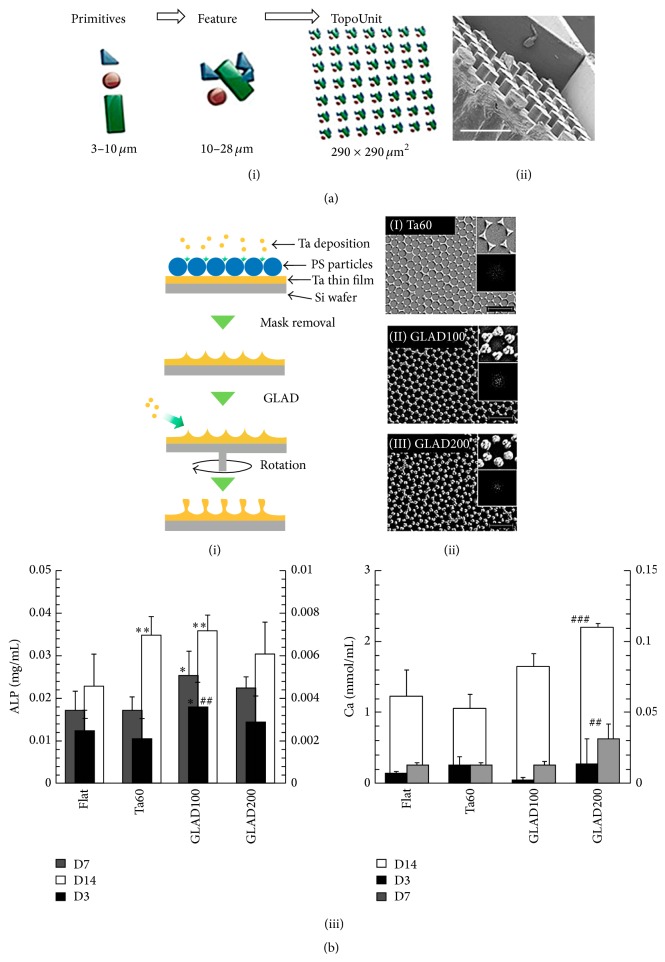Figure 3.
(a) An algorithm-based topographical chip. (i) Fabrication of the topographical chip (poly(lactic acid)) was based on the unique mask design using mixed primitives (circles, triangles, and rectangles). (ii) SEM images of a section of the patterned feature (scale bar: 50 μm). (b) Fabrication of micropillar array with GLAD technique. (i) Fabrication of tantalum (Ta) nanotopographies using a combination of colloidal self-assembly, colloidal lithography, and glancing angle deposition (GLAD) techniques. After assemble 722 nm poly(styrene) colloids, 60 nm Ta (Ta60) was sputtered, and then mask was removed, and GLAD of Ta was done for increasing of feature heights (GLAD100 or GLAD200). (ii) Scanning electron micrographs (SEMs) of Ta60, GLAD100, and GLAD200 (scale bar: 2 μm). (iii) Alkaline phosphatase (ALP) and calcium (Ca) quantification of osteogenic differentiated human adipose derived stem cells (hADSCs) on the surfaces by the cells were quantified with at least three samples (n > 3). # and ∗ indicate that there is a significant difference between FLAT and Ta60, respectively.

